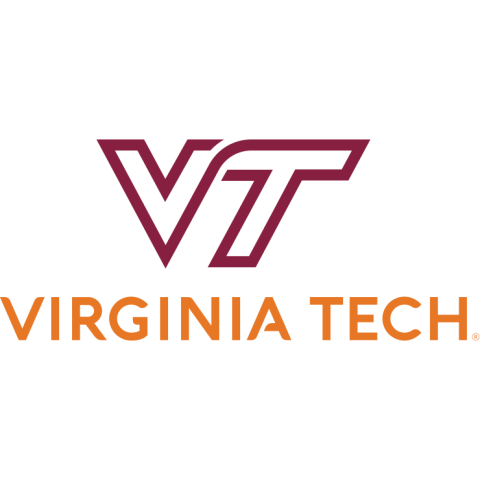
Who cares about this problem as much as you do?
You may also like
Winning research funding is increasingly competitive. To succeed, researchers need to leverage strategy, storytelling and resilience – all with the goal of taking ideas that could change the world and making sure they don’t die on someone’s desktop.
While I work with researchers whose expertise spans everything from the thermosphere to traumatic brain injury to wireless networks, I’m not an expert in any of those fields. And although my role includes increasing sponsored expenditures by finding funding, which means I understand the challenges of obtaining funding only too well, my job isn’t to know everything. It’s to help brilliant minds communicate their science in a way that funders can’t ignore.
Here’s what I’ve learned about what it takes to move from concept to award.
Start with the right funder
The single biggest mistake I see? Chasing dollars instead of alignment. The most innovative idea will fail if it doesn’t match the funder’s mission. That’s why my first question is always: who cares about this problem as much as you do?
- Write a grant proposal to win government funding
- Donors want to see real-world impact. What does that mean for higher education in the sciences?
- How exactly does research get funded?
Sometimes the answer is obvious – Nasa for space weather, the National Institutes of Health (NIH) for biomedical innovations. Other times, it takes detective work: scanning solicitations, leveraging networks or even digging into the language of a strategic plan. And never overlook internal funding. It’s the best-kept secret on most campuses.
Lead your research funding bid with ‘why’
Start with the why. Why does this research matter? Why should anyone care? The most powerful narratives I’ve seen are deeply human: the engineer who watched someone struggle with traumatic brain injury and vowed to design better devices; the scientist determined to mitigate space weather risks because of what a single solar storm could do to our infrastructure.
Once you’ve hooked them with the why, point out the gaps in knowledge. What don’t we know? Why does it matter now? And then – only then – tell them how you’ll solve it.
Your budget tells a big part of the story
A budget isn’t just math; it’s a mirror of your project’s logic and feasibility. Reviewers can tell when the numbers don’t match the ambition. Every line should tie directly to your goals: people, tools, data collection, dissemination.
I’ll illustrate with examples. When I supported a significant Nasa study, we didn’t just list expenses. We showed how each cost enabled a specific milestone. For regional projects such as the Industry 4.0 for the ACE Workforce – an initiative to advance the region's transportation and autonomous vehicles sector that involves more than 150 public, private and non-profit organisations – we linked dollars to measurable outcomes, such as the number of students trained or companies served. That level of clarity builds trust.
Build the right team
Funders want collaboration. Some even require it. Why? Because the hardest problems demand multiple perspectives.
I’ve helped assemble coalitions of more than 150 organisations, from universities to industry partners. The key isn’t just picking names. It includes defining roles, establishing communication plans and showing reviewers you’re not just a group – you’re a true team.
Plan like a project manager
An idea without a road map is just a wish. Funders look for feasibility, and that means timelines with milestones, responsibilities and evaluation built in. If you’re asking for millions, you need to show you can manage complexity. We map out everything – from kick-off to reporting – because details win proposals as much as creativity.
Demonstrate proof of impact
Before you chase a $5 million award, consider whether your bid can show evidence of impact – both academic and societal – and prove that your idea works. Pilot projects, concept studies, internal grants – these are steppingstones that signal feasibility. At Virginia Tech, the Destination Areas programme and our college initiatives like the Major Grants Initiative have helped engineering faculty secure seed money that later turned into multimillion-dollar awards. Small wins build momentum.
To show impact, collect metrics: engagement, diversity, workforce outcomes. Build the evidence, and scale strategically.
Rejection isn’t the end, it’s data
A declined proposal isn’t failure; it’s feedback. I tell faculty this all the time. Rejection is common; even strong proposals get turned down. Reviewers often point to exactly what you need to fix – unclear aims, thin partnerships, weak justifications. Sometimes we pivot to a better fit. Sometimes we bring in new collaborators. The only true failure is not learning from the misstep and deciding not to try again.
Never write in a vacuum
Even senior researchers know the value of outside eyes. Peer reviews make good proposals great, and if you can have non-researchers look over the proposal, all the better – they will let you know if your proposal is understandable even to a layperson. This is critical because many proposal reviewers are not specialists in your field.
Clarity improves with conversation. If your proposal opens with jargon, you’ve already lost. You always want to separate technical terms from jargon, then stick with technical terms and eschew the jargon.
Ultimately, research funding isn’t just about securing a grant – it’s about amplifying the impact of the work happening on our campuses. As higher education professionals, we have the privilege and responsibility to turn groundbreaking ideas into funded realities that change lives, drive innovation and advance our institutional mission. The strategies I have outlined here – alignment, storytelling, collaboration and persistence – are tactics, yes, but they are also the foundations of a culture where research thrives. When we help faculty move from concept to award, we’re not only winning dollars; we’re shaping the future of knowledge and demonstrating the indispensable role of higher education in solving society’s biggest challenges.
Nicole Akers is assistant director of research for the College of Engineering at Virginia Tech.
If you would like advice and insight from academics and university staff delivered direct to your inbox each week, sign up for the Campus newsletter.




